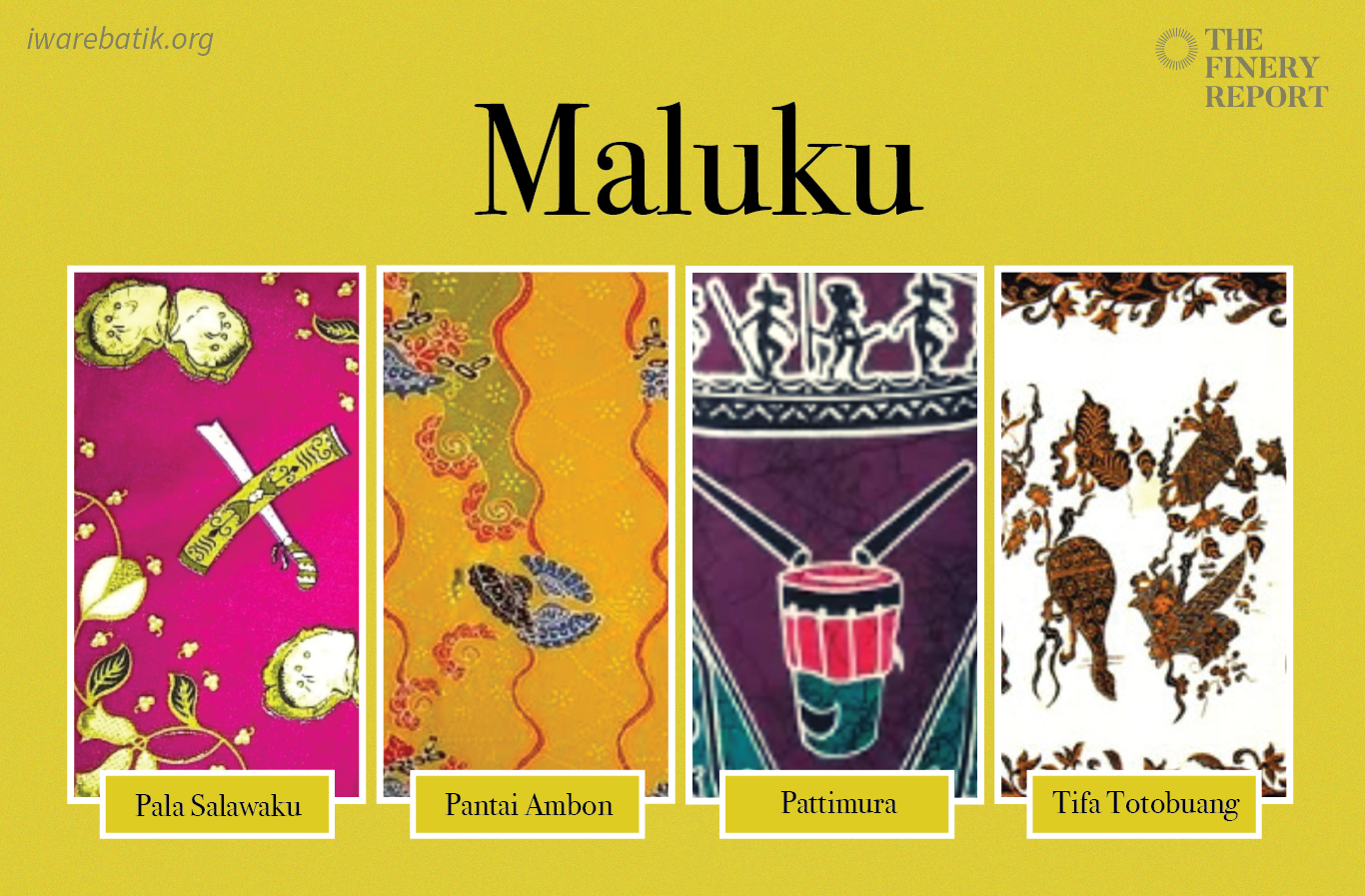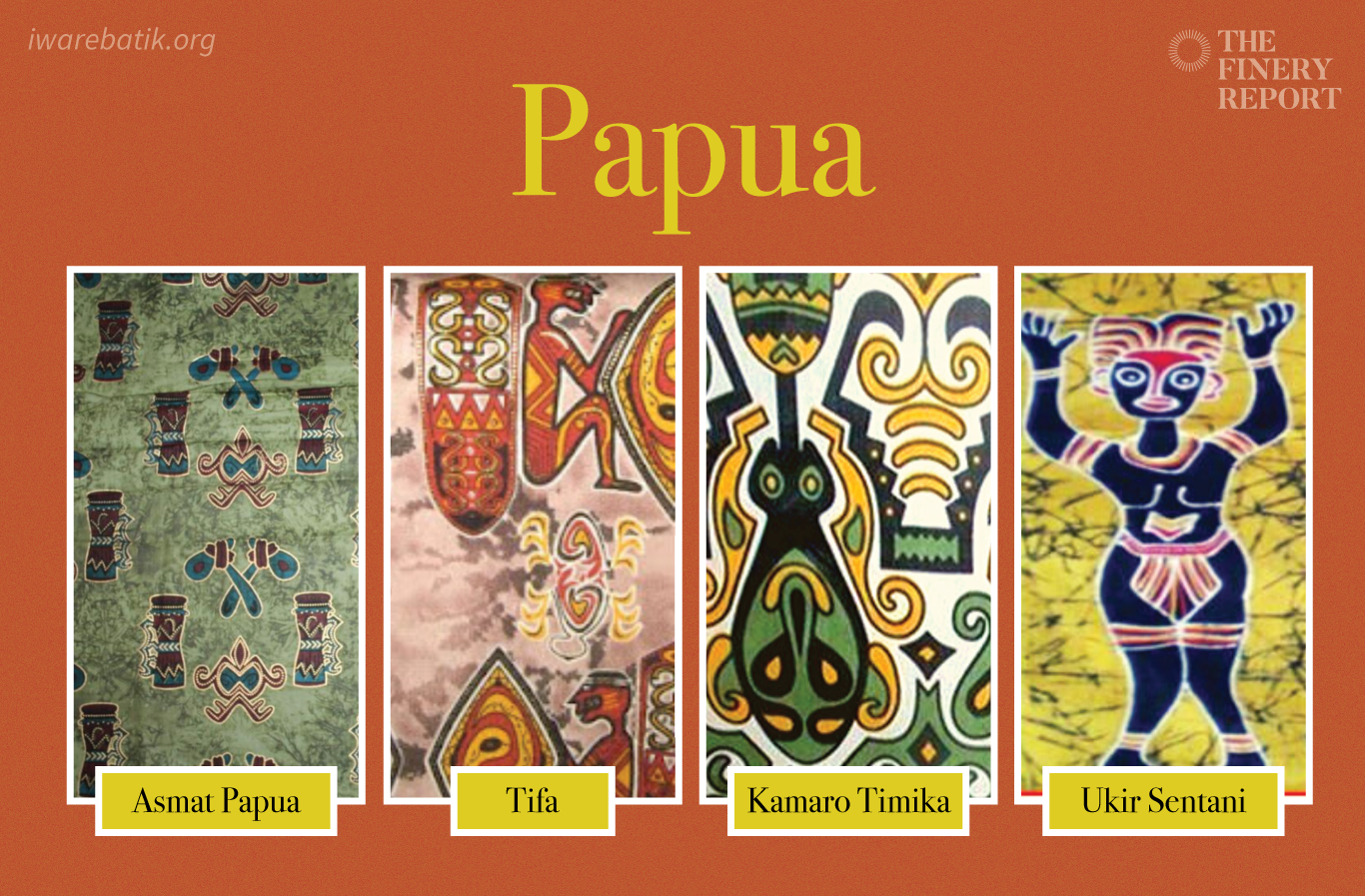Tracing batik in Maluku, Nusa Tenggara and Papua
Read in Indonesian
In order to learn more about the history and the motifs of Indonesian batik, TFR reached out to Sobat Budaya, one of the contributors of iWareBatik, a web-based application that is dedicated to record the history of Indonesian batik.
Batik, as an intangible heritage, basically reflects our identity. It is an idea of what the community it represents is all about. That is why each area develops different designs with their respective uniqueness.
The sole reason for this is because each area has their own cultural values, traditions, local wisdom, myths, artistic visions, social standings and many more. Even their geographical location affects the batik motifs that they develop. In Indonesia, there are three classifications of batik motifs, namely batik of the agrarian society, batik of the coastal society and batik of royal palace.
Batik of the agrarian society usually illustrates the daily life of a community in which their livelihood relies on producing and maintaining crops and farmland.
Meanwhile, batik of the coastal society illustrates the kind of lifestyle in which the livelihood relies on the body of water in the surrounding area. Some of them are easy to identify for illustrating marine life.
The last one is batik of royal palace. At one point of its existence, these batik were reserved only for the royals or the noble class. This kind of restriction was usually applied strictly in period times as access to the fabric was limited. However, we are now at a point where anyone can wear any batik of their choice without reserve. This is the kind of freedom we can make use to preserve the batik tradition; by incorporating it in our daily life.
For the last part of the series, we will be talking about Maluku, Nusa Tenggara and Papuan batik.
Maluku
Maluku has opened its door to the world for spice trade since the 15th century, including to Javanese merchants. The spices that they produce are what inspired the creation of Maluku batik motifs. The warring period during the Portuguese and VOC occupation is recorded in one of their motifs, namely parang salawaku.
As the history of their spice glory is so ingrained in the collective memory, spices such as clove and nutmeg in their batik motifs became an illustration of their identity. Local artisans also develop motifs based on the local culture. The tifa totobuang motif, for example, illustrates the local traditional musical instrument. Other notable motifs from this area are pala salawaku, pantai ambon and pattimura.
North Maluku
North Maluku batik is often called tubo ternate batik, which originated from the Tubo village in 2010. As a batik of the coastal society, the motifs incorporate the marine landscape and biodiversity of North Maluku.
Tubo ternate batik represents the local wisdom of the North Maluku society. Many of their batik also illustrate the area’s unique culture, historical remains, flora and fauna. Some of the notable motifs are burung bidadari, alam pantai and tubo kelapa.
East Nusa Tenggara
This province has its own specialty textile, namely ikat. Ikat is a traditional textile that is made with the weaving technique. With the help of Javanese batik artisans, East Nusa Tenggara developed their own batik with motifs which are inspired by their ikat.
The motifs of East Nusa Tenggara batik usually incorporate mythical figures, flora, fauna and the concepts of appreciation and good wishes. Each island in this province developed their own motif. Some of the notable motifs from this area are kuda sepasang, kuda kupang, pucuk mekar and teguh bersatu.
West Nusa Tenggara
The batik tradition in West Nusa Tenggara was initiated by the local government in 2010 and is called sasambo batik. Sasambo is an acronym of the three big tribes in West Nusa Tenggara: Sasak, Sumbawa and Mbojo. Sasambo batik is intended to represent the local identity and the harmony among the tribes in the province.
The motifs of this batik incorporate mythical abstract patterns that embody West Nusa Tenggara’s remarkable historical, aesthetic and philosophical values. There are also motifs that promote local customs and cultures. Some notable motifs of this area are bale lumbu, tari peresean, tenun bima and daun sirih.
Papua
In 1985, the United Nations Development Program (UNDP) initiated the development of Papuan batik. Today, Papuan batik galleries began to grow along with the increasing number of local artisans. Through their own batik, the local artisans attempt to illustrate the Papuan landscape, flora, fauna, cultural designs, local wisdom and the tribal symbols.
The motifs usually incorporate what are the parts of the Papuan everyday life, from an illustration of the birds-of-paradise and Asmat designs to tifa, the local traditional musical instrument. Some other notable motifs are kamaro timika and ukir sentani.
West Papua
West Papuan batik motifs are generally similar to that in Papua. However, to represent its famous natural landscapes, such as Raja Ampat, West Papuan batik incorporate more colourful designs to illustrate the beauty of the coral reefs and marine parks. They also incorporate traditional architecture designs, such as honai (traditional house). Each design is also embedded with philosophical value, like honai that means a home full of happiness. Other notable motifs are burung cendrawasih and prada papua.
Learn about the history, cultural implications, the meaning behind every motif, and so much more about Indonesian batik at www.iWareBatik.org



















